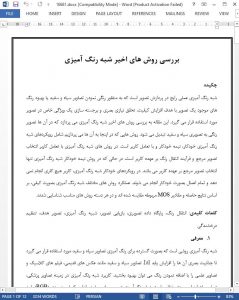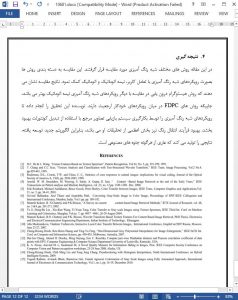Abstract
Pseudo-coloring, a common task in image processing is used to color a grayscale image or to modify an existing color image with an intention of enhancing visual quality, imparting a visual appeal and highlighting specific features in the image. This paper presents a review of recent pseudo-coloring techniques in which the color is transferred from a source color image to a grayscale one. The techniques that we discuss here include the user interactive, semi-automated and automated pseudo-coloring approaches. The user interactive pseudo-coloring methods demand a complete user effort in selecting the source image as well as in color transfer process, whereas the task of user in semi-automated pseudo-coloring approaches is confined only to the selection of source image. In automated pseudo-coloring approaches, the user does not take any effort since the whole process is automatic. The performance of various pseudo-coloring techniques has been compared qualitatively based on the corresponding colored results and MOS values, and thereby identify the appropriate methods in each category.
I. INTRODUCTION
Pseudo-coloring is a widely used technique for the colorization of grayscale images in order to enhance their visual appeal [5]. Color can be added to grayscale images such as old black and white photos, classic movies or scientific illustrations, which is a form of image enhancement. Pseudo-coloring finds its application in the areas of medical images, satellite images and even in military. The task of colorizing a grayscale image involves assigning three dimensional (RGB) pixel values to an image which varies along only one dimension (luminance or intensity). Since dissimilar colors may have the same luminance value but vary in hue or saturation, the problem of colorizing grayscale images has no inherently correct solution. Due to these ambiguities, human interface usually plays a large role in the colorization process. In pseudocoloring, where the mapping of luminance values to color values is automatic, the choice of the color map is commonly determined by human decision. So the amount of human interference needs for colorization may be decreased by transferring color from a source color image. The efficiency of pseudocoloring technique is based on three main features viz; Distinguishability, Aesthetic sense and Extend of pixels colored. Distinguishability means to identify specifically the different features or objects in a pseudo-colored image. Aesthetic sense defines the sense of beauty and it differs from person to person. Extend of pixel coloring shows the total number of pixels that were colored by the pseudo-coloring technique.
IV.CONCLUSION
In this paper a comparison study of different pseudo-coloring techniques have been discussed. The discussion aids in categorizing the techniques as user interactive, semi-automated and automated pseudo-coloring approaches. The comparison results showed that Histogram Interpolation technique scores better compared to other semi-automated pseudo-coloring approaches where as the FDPC methods is superior among automated approaches. The author is doing his research to enhance the pseudo-coloring approach by implementing the source image retrieval system using contourlet transform. The refinement of the color transfer process is also a major part of his research so that the newly developed algorithm produces results which are devoid of all types of visual artifacts.











